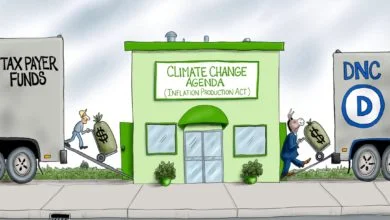States with no income tax don’t do better than those with high income taxes?
Nothing like a flawed correlation to give liberals the meat they need to boast the benefits of higher taxation
A New York Post op-ed post byJuliet Lapidos uses an Institute of Taxation and Economic Policy Report to create the false correlation of income tax to economic output.
An ITEP report demonstrates that states with no personal income tax don’t have a higher per-capita economic output than those states with personal income tax.
The Post’s article is just wrong. Ms. Lapidos, in an attempt to create red meat for the paper’s liberal readership, re-interprets the ITEP report to refute supply-side economics. The study and Ms. Lapidos artistic attempt at logic do not disprove that economic theory.
Supply-side economics don’t work, but that won’t stop the Mary Fallins of the world from foisting it upon us. They care too much about their ideology to worry about reality.
Instead, the report simply shows that personal income tax rates may not have a significant impact on the economic output of a given state. By looking at only one aspect of state-level economies, the author misses the other factors in-play.
States with no income taxes have other means by which produce income. Higher sales taxes and revenue from state-located businesses are examples. One way or another, the same burden is placed on the consumer as businesses will simply pass taxes on to consumers. In the end, states take in what they need to fund the spending in their budgets.
Supply-side economics isn’t about personal income taxes alone. It is about the burden on those with capital to invest. If income taxes are lower, but sales taxes are an equivalent amount higher then the burden on the taxpayer is the same and therefor the impact to investment is the same. Of course the report and the flawed analysis of it also disregard the economic make-up of each state. States with more rural areas or a more thrifty populace will necessarily demonstrate a lower per-capita economic output. But who’s to say that’s bad for the individuals that chose to keep their cars for ten years instead of three?
There are far too many neglected economic aspects for the study to prove or disprove supply or demand side economics. To do so would require a much more in-depth look at the macro-economy of each state – a task I imagine the author to be unwilling to take on.
The article simply shows ignorance about supply-side economics – not that they don’t work.



